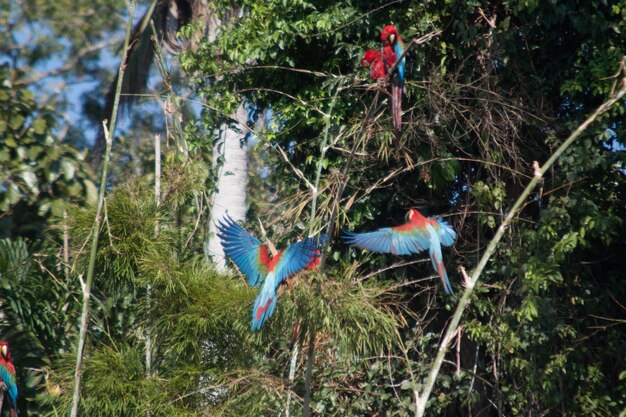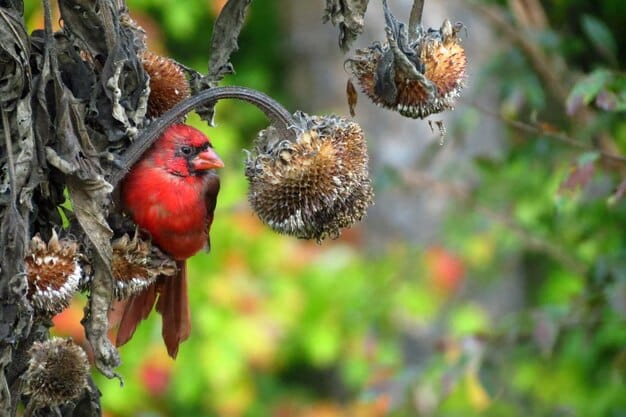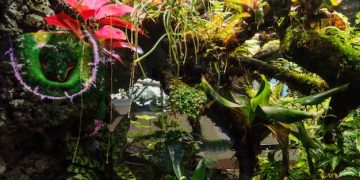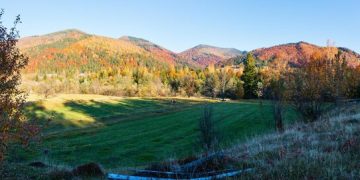Top 5 US National Parks for Birdwatching & Species Identification

Discover the top 5 national parks in the US for birdwatching, learn how to identify common bird species, and enhance your outdoor experience with essential tips and resources.
Are you an avid birdwatcher or nature enthusiast looking for the ultimate birding destinations? Look no further! This guide reveals what are the top 5 national parks for birdwatching and how to identify common species, ensuring you have an unforgettable experience in the heart of nature.
Discover the Allure of Birdwatching in National Parks
Birdwatching, or birding, is a fantastic way to connect with nature and appreciate the diverse ecosystems found within national parks. These protected areas offer a sanctuary for countless bird species, making them ideal for both novice and experienced birdwatchers.
Whether you are looking to spot rare migratory birds or observe familiar species in their natural habitat, national parks provide unparalleled opportunities for birding adventures.
Why Choose National Parks for Birdwatching?
National parks offer several advantages for birdwatching enthusiasts, including diverse habitats, protected environments, and exceptional resources for visitors interested in learning more about avian life.
- Diverse Habitats: National parks encompass a wide range of ecosystems, from forests and wetlands to deserts and mountains, each supporting unique bird species.
- Protected Environments: These parks provide safe havens for birds, free from habitat destruction and excessive human interference.
- Educational Resources: Many national parks offer guided tours, educational programs, and visitor centers with information on local bird species and conservation efforts.
Embarking on a birdwatching adventure in a national park combines recreation with education, allowing you to deepen your appreciation for nature while contributing to conservation efforts.
Acadia National Park: A Coastal Birding Paradise

Located in Maine, Acadia National Park offers a stunning coastal landscape that attracts a wide variety of bird species. From seabirds soaring along the rugged coastline to songbirds flitting through the forests, Acadia is a birdwatcher’s paradise.
The park’s diverse habitats, including rocky shores, woodlands, and freshwater wetlands, provide ideal conditions for birdlife throughout the year.
Key Bird Species to Spot in Acadia
Acadia National Park is home to a diverse array of bird species, making it an exciting destination for birdwatchers. Some key species to look out for include:
- Atlantic Puffin: These colorful seabirds nest on nearby islands and can be spotted during boat tours.
- Bald Eagle: Keep an eye out for these majestic birds of prey soaring overhead or perched in tall trees.
- Peregrine Falcon: These swift predators can be seen hunting along the cliffs and rocky coastline.
With its breathtaking scenery and abundant birdlife, Acadia National Park is a must-visit destination for anyone interested in birdwatching.
Everglades National Park: A Wetland Haven for Birds
Located in Florida, Everglades National Park is a unique wetland ecosystem that supports an incredible variety of bird species. This vast wilderness is home to wading birds, raptors, and migratory birds, making it a prime location for birdwatching.
The park’s expansive sawgrass prairies, mangrove forests, and freshwater sloughs provide essential habitat for birds to feed, breed, and nest.
Bird Identification Tips for the Everglades
Identifying bird species in the Everglades can be challenging due to the park’s diverse avian population. Here are some tips to help you identify common birds:
- Wading Birds: Look for birds with long legs and necks, such as herons, egrets, and spoonbills, feeding in shallow waters.
- Raptors: Scan the skies for birds of prey like hawks, eagles, and vultures soaring overhead or perched in trees.
- Migratory Birds: During migration season, be on the lookout for colorful songbirds and waterfowl passing through the park.
Exploring the Everglades by boat or on foot offers excellent opportunities to observe and identify the park’s abundant birdlife.
Great Smoky Mountains National Park: A Forested Birding Gem
Nestled in the Appalachian Mountains, Great Smoky Mountains National Park offers a lush forested landscape that teems with birdlife. This park’s diverse habitats, ranging from low-elevation forests to high-elevation spruce-fir forests, support a wide variety of bird species.
The park’s rich biodiversity and varied terrain make it an ideal destination for birdwatchers seeking to discover the avian wonders of the eastern United States.

Common Bird Species in the Great Smoky Mountains
The Great Smoky Mountains National Park is home to an impressive array of bird species, rewarding birdwatchers with unforgettable sightings. Some notable species to watch for include:
- Wood Thrush: Listen for the melodious song of this forest dweller, often heard during the early morning hours.
- Scarlet Tanager: Spot these vibrant red birds flitting among the trees, especially during the breeding season.
- Ruffed Grouse: Keep an eye out for these ground-dwelling birds as they forage in the undergrowth.
Exploring the park’s numerous hiking trails offers the best opportunities to observe and appreciate the park’s diverse birdlife.
Olympic National Park: A Diverse Habitat for Birdlife
Located in Washington State, Olympic National Park boasts a diverse landscape encompassing mountains, rainforests, and coastline, each providing unique habitats for birdlife. From seabirds along the Pacific coast to songbirds in the forests and alpine meadows, the park offers an abundance of birdwatching opportunities.
Olympic National Park’s varied ecosystems create a haven for over 300 bird species, making it a premier destination for birdwatchers.
Tips for Successful Birdwatching in Olympic National Park
To make the most of your birdwatching experience in Olympic National Park, consider these helpful tips:
Explore Different Habitats: Venture into the park’s coastal areas, forests, and mountains to discover a wide array of bird species, each adapted to their specific environment.
Use Binoculars: Bring a good pair of binoculars to enhance your ability to observe and identify birds from a distance.
Carry a Field Guide: A field guide can help you identify bird species based on their appearance, behavior, and habitat.
By following these tips and exploring the park’s remarkable habitats, you can enjoy unforgettable birdwatching experiences in Olympic National Park.
Rocky Mountain National Park: Alpine Birding Adventures
Situated in Colorado, Rocky Mountain National Park is a stunning alpine environment that provides habitat for a variety of bird species adapted to high-altitude conditions. From ptarmigans and rosy-finches to eagles and hawks, the park offers unique birdwatching opportunities in a breathtaking mountain setting.
Birdwatching in Rocky Mountain National Park allows you to witness the resilience and beauty of avian life in a challenging environment.
Identifying Alpine Bird Species
Identifying bird species in Rocky Mountain National Park can be both challenging and rewarding. Here are some tips to help you spot and identify common alpine birds:
Look for Ptarmigans: These well-camouflaged birds blend in with the rocky terrain, making them difficult to spot. Look for their distinctive mottled plumage.
Listen for Rosy-Finches: These hardy birds are often found near mountain peaks and can be identified by their cheerful calls and rosy-colored feathers.
Scan the Skies for Raptors: Keep an eye out for eagles and hawks soaring overhead as they search for prey in the alpine environment.
With patience and observation, you can unlock the secrets of alpine birdlife in Rocky Mountain National Park.
| Key Point | Brief Description |
|---|---|
| 🏞️ Diverse Ecosystems | Explore various US National Parks with unique habitats. |
| 🦅 Bird Identification | Learn how to identify common bird species in their natural habitats. |
| 🔭 Essential Gear | Pack binoculars and field guides for successful birdwatching. |
| 🗺️ Top Destinations | Visit Acadia, Everglades, Smoky Mountains, Olympic, & Rocky Mountain National Parks. |
FAQ
▼
National parks offer diverse habitats, protected environments, educational resources, and guided tours, making them perfect for birdwatchers of all levels.
▼
Binoculars are crucial for observing birds from a distance, and a field guide helps with identifying different species based on their appearance and behavior.
▼
Look for unique characteristics such as size, color, beak shape, and behavior. Listening to their songs and calls can also aid in identification.
▼
Spring and fall migrations are excellent times, as many bird species pass through the parks. However, resident birds can be observed year-round depending on the park.
▼
Yes, many national parks offer guided birdwatching tours led by experienced naturalists, providing valuable insights and enhancing your birding experience.
Conclusion
Exploring the top 5 national parks for birdwatching offers a unique opportunity to connect with nature and observe diverse avian species in their natural habitats. By following the tips and insights provided in this guide, you can enhance your birdwatching adventures and deepen your appreciation for the natural world.





